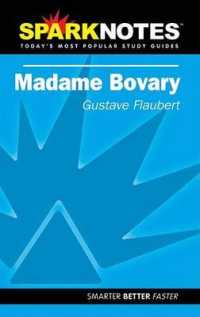Full Description
"This book showcases recent developments in the field of Japanese applied linguistics. It covers a wide range of current issues and influential theoretical and methodological frameworks, many of which are of concern not only for Japanese specialists but also applied linguists in general. At the same time, the book provides empirical studies that exemplify how these issues and frameworks manifest themselves in contexts that surround first and second language speakers of Japanese. The book is divided into four sections. The first examines language in action, providing a close analysis of language as it is used in interactions between speakers. The second section looks at sociological diversity in Japanese speakers, considering factors such as gender, age, or background. Section three explores how globalization has affected Japanese language use and acquisition. The final section reflects on classroom teaching of Japanese language and culture. This comprehensive, in-depth study will be useful for researchers and graduate students in both applied linguistics and Japanese linguistics. "
Contents
Introduction, Junko Mori (University of Wisconsin-Madison, USA) and Amy Snyder Ohta (University of Washington, USA); Part I: Reexamination of language in action; 1. Conversation and grammar: Approaching so-called conditionals in Japanese, Tsuyoshi Ono (University of Alberta, USA) and Kimberly Jones (University of Arizona, USA); 2. Negotiating agreement and disagreement in Japanese: An analysis of designedly ambiguous turn completion points, Junko Mori (University of Wisconsin-Madison, USA) and Kanae Nakamura (University of Wisconsin-Madison, USA); 3. Construction of speech styles: The case of the Japanese naked plain form, Haruko Minegishi Cook (University of Hawai'i-Manoa, Hawaii); Part II: Ideologies, diversities, and identities; 4. Keigo ideology, Patricia J. Wetzel (Portland State University, USA); 5. The use of "regional" and "standard" Japanese in conversations: A case study from Osaka, Shigeko Okamoto (California State University, USA); 6. When the coach is a woman: The situational meanings of so-called masculine directives in a Japanese boxing gym, Misao Okada (Hokusei Gakuen University, Japan); 7. Discursive practices and changing identities in elderly Japanese women, Yoshiko Matsumoto (Stanford University, USA); Part III: Japanese as an additional language; 8. Laughter and second language acquisition: A study of Japanese foreign language classes, Amy Snyder Ohta (University of Washington, USA); 9. Making inquiries: Toiawase strategies by Japanese L1 and L2 callers to Japanese educational institutions, Lindsay Amthor Yotsukura (University of Maryland, USA); 10. Transnationalism, imagined communities, and language minority education in Japan, Yasuko Kanno (Temple University, USA); Part IV: Critical reflection on language pedagogy; 11. Learner competence as a resource in the Japanese as a foreign language classroom: Issues in oral assessment, Dina Rudolph Yoshimi (University of Hawai'i-Manoa, Hawaii); 12. Critical approaches to teaching Japanese language and culture, Ryuko Kubota (University of North Carolina, USA); Bibliography; Index.








